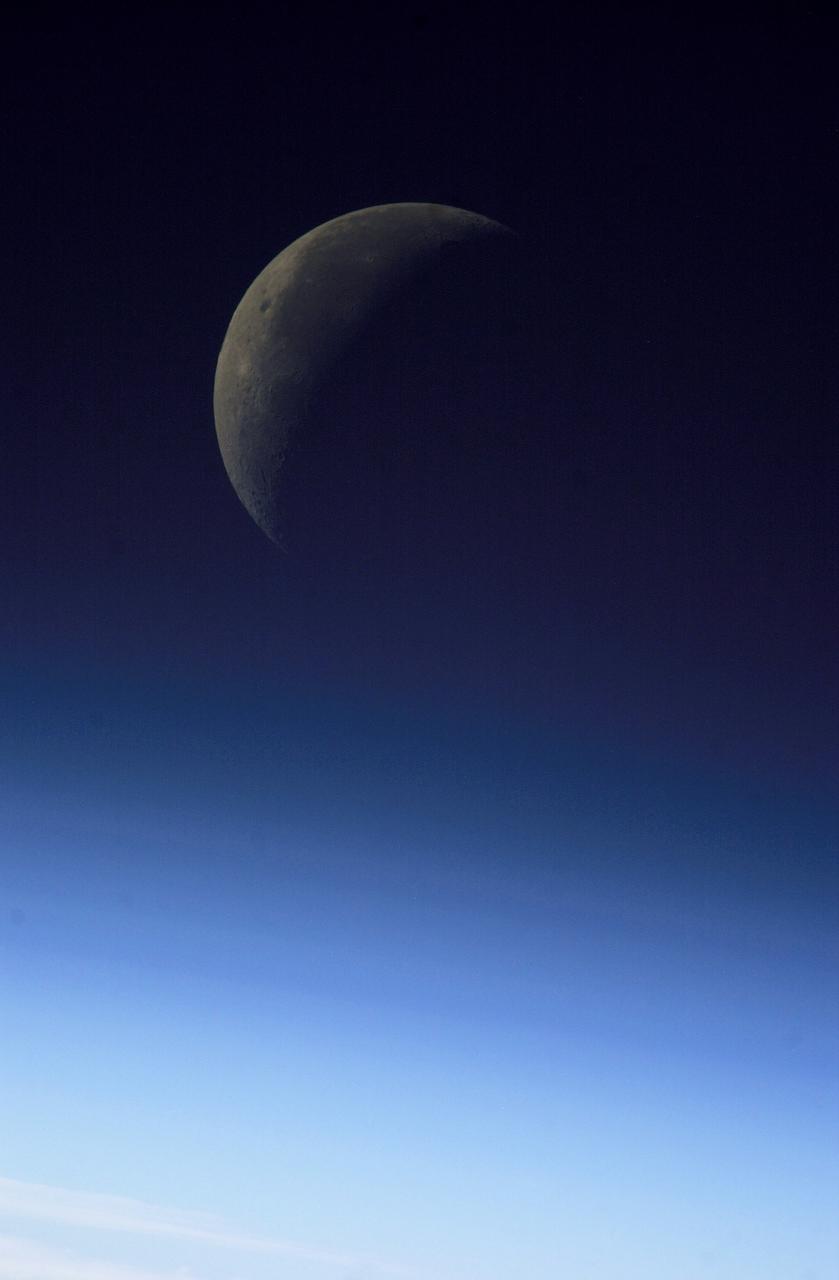AstroFan: Reimagining the Origins of the Moon with Synestia

Hello again! Welcome to the second installment of our AstroFan series! This month’s topic focuses on
A few weeks ago a colleague and I were shocked to discover the grisly nature of metamorphosis.
The conversation went something like this:
“You mean to tell me that caterpillars digest themselves, and essentially become caterpillar SOUP in their cocoons?!” I asked incredulously.
“Yep! They just turn into mushy-gobbledygook, rebuild themselves, and then voila butterfly,” replied Carly (our Content Specialist here at the Adler).
“That’s insane! Who knew butterflies were so hardcore?!” I exclaimed, filled with chagrin at the realization that I had completely misunderstood the whole caterpillar to butterfly process for the last 24 years of my life.
I bet you’re wondering why I chose to start off with an anecdote about the butterfly’s life cycle!
WELL, there is a brand new theory about our Moon’s formation, called Synestia, that oddly enough, mirrors a butterfly’s metamorphosis.
In order to fully understand Synestia, we’ll need to start at the beginning. It’s important to have a grasp on the way things were in our early Solar System (and by early I mean 4.5 BILLION years ago).
To sum it up: things were extremely chaotic! Our early Solar System was packed with planets and debris, making collisions a constant reality. These destructive events, driven by gravity, aided in the shaping and molding of our Solar System into what it currently looks like today.
Which brings us to proto-Earth (Earth at an early stage of its development) and our early Moon!
For years, astronomers have been working to figure out just how our celestial neighbor, the Moon, came to be. The long-standing theory of Moon formation has been the Giant Impact Hypothesis. In this model, proto-Earth suffered a collision with a Mars-sized planet called Thea. According to this hypothesis, the impact caused material to be ejected out and the Moon formed from the material!
Although this hypothesis has been the leading model for over a decade, there is one question in particular that it has a hard time answering: Why are the Earth and the Moon composed of such similar material?
The issue with the Giant Impact Hypothesis is that the simulations for it point to the Moon being formed mostly from Thea. This would in turn lead to a Moon that doesn’t have such a strikingly similar composition to Earth—which is not the case (at all).
In 2018, scientists Simon Lock and Sarah Stewart proposed an alternate theory for Moon formation, Synestia, that worked to rectify some of the shortcomings of the long-standing Giant Impact Hypothesis.
The proposed collision in the Synestia model goes something like this (as seen in the Adler’s new sky show Imagine the Moon):
I. Proto-Earth, spinning so fast that it has an oblong shape.
II. Proto-Earth makes impact with a planet named Thea. The collision has such a high angular momentum that 10% of the Earth’s rock is vaporized and the rest becomes liquified.
(Fun Fact: One of the cool things about Synestia is that it allows for lots of different types of collisions with different mass ratios to work! Unlike the Giant Impact Hypothesis, which requires a Mars-sized planet!)
III. And VOILA Synestia forms: a high-speed, spinning object of molten and gaseous material—which also happens to be in the shape of a donut (yum)!
Once a Synestia forms, it can be segmented into two main parts: an inner and an outer region. As a Synestia cools, a “seed” of liquid rock begins to form from within, as vaporized rock condenses and falls (a.k.a magma rain), the seed begins to grow and eventually becomes our Moon. The rest of the material left behind becomes Earth.
This whole process happens in the cosmic blink of an eye! Some estimate that Synestias exist for just a century.
Unlike the Giant Impact Hypothesis, Synestia explains why the Earth and Moon are so similar in composition—it’s because they were formed from the same material!
Isn’t it cool to think that our planet and Moon formed as a result of such a cataclysmic event?
Just like the caterpillar, our Moon was able to experience a sort of rebirth, in a cocoon of its own debris (or shall we say its own gobbledygook). Kind of poetic, don’t you think?
Stay tuned for more awesome space facts on the next AstroFan.
Thank you for reading!
— Bianca a.k.a AstroFan






